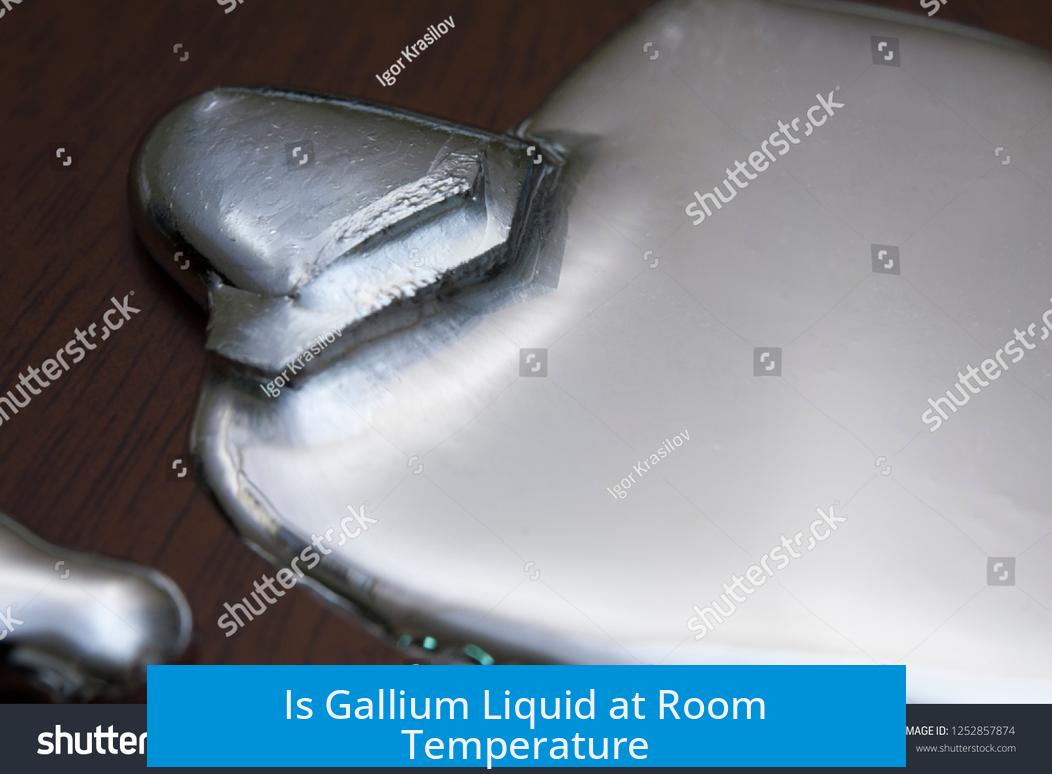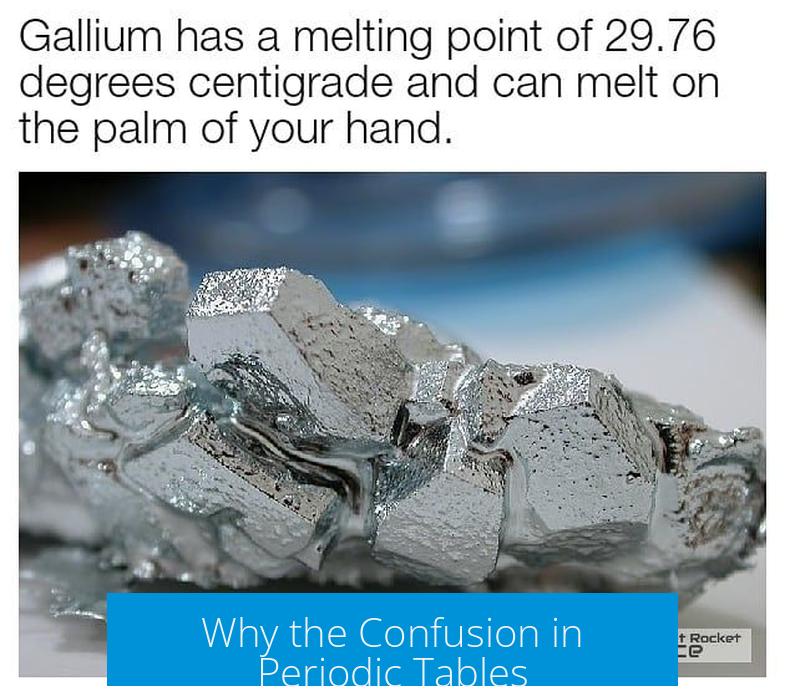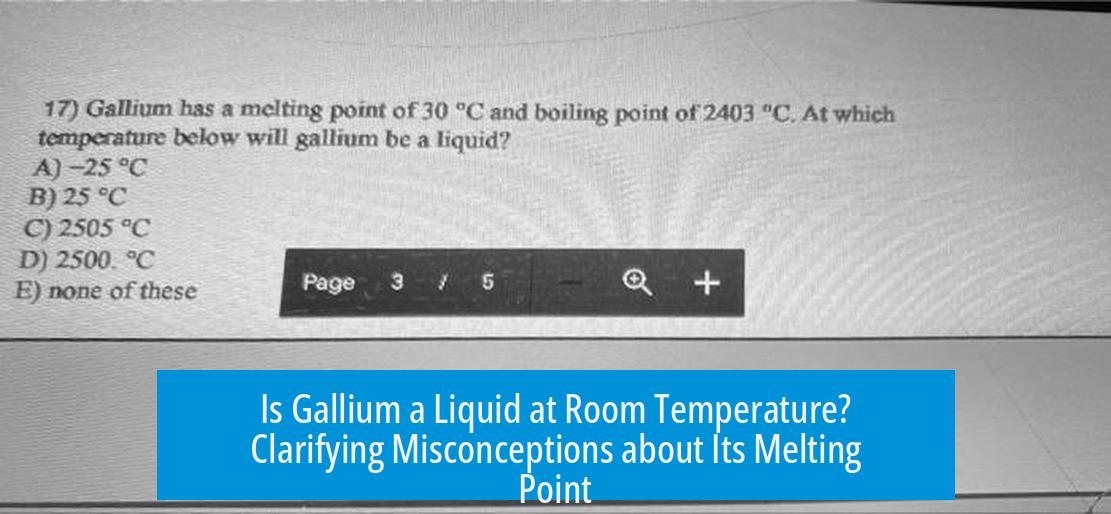Is Gallium Liquid at Room Temperature?

Gallium is not liquid at typical room temperatures (20-25°C); its melting point is about 29.8°C, which is slightly above normal room temperature. Therefore, under standard conditions, gallium remains solid, contradicting any periodic table that labels it as liquid at room temperature.
Understanding Gallium’s Melting Point
- Gallium melts at approximately 29.8°C (85.6°F).
- This melting point is just above usual room temperature ranges.
- Depending on the environment, gallium can become liquid if the temperature exceeds 30°C, such as on a warm day or when held in a hand.
Gallium’s melting point places it in a unique category. It is a metal solid at room temperature but can melt in slightly warmer settings. This property sometimes causes confusion.
Common Room Temperature Liquids on the Periodic Table
Only two elements are liquid at standard temperature and pressure (STP): bromine and mercury.
| Element | Melting Point (°C) | State at Room Temperature |
|---|---|---|
| Bromine | -7.2 | Liquid |
| Mercury | -38.8 | Liquid |
| Gallium | 29.8 | Solid (usually) |
Why the Confusion in Periodic Tables?

Some periodic tables may indicate gallium as liquid near room temperature due to simplified or approximated data. They might factor in gallium’s low melting point relative to metals, but such labeling is inaccurate for normal laboratory temperatures.
The physical state depends on the precise ambient temperature:
- Below ~29.8°C: gallium is solid.
- Above ~29.8°C: gallium melts and becomes liquid.
In rare or warm climates, gallium can appear liquid without external heating. However, this is not typical room temperature by general definitions.
Special Notes on Pure Gallium and Alloys
Pure gallium exhibits complex phase behavior with partial liquid phases at temperatures near 15°C under specific conditions. Also, eutectic alloys involving gallium can have lower melting points. But elemental gallium’s melting point remains around 29.8°C.
Key Takeaways
- Gallium melts at about 29.8°C, above standard room temperature.
- It is solid in typical laboratory or indoor conditions (20-25°C).
- Only mercury and bromine are liquid at room temperature among elements.
- Periodic tables labeling gallium as liquid at room temperature likely oversimplify or misrepresent its state.
- Gallium’s unique melting point means it can melt by slight warming but isn’t liquid at standard room temperatures.
Is gallium really liquid at room temperature as some periodic tables claim?
No. Gallium’s melting point is about 30°C, which is slightly above normal room temperature (20-25°C). So, at typical room temperature, gallium is solid, not liquid.
Why do some sources say gallium melts near 30°C while others mention 85°C?
The 85°C figure is likely incorrect or relates to an alloy or different conditions. Pure gallium melts around 29.8°C, close to 30°C, which causes confusion about its state near room temperature.
Can gallium be liquid at some room temperatures?
Yes. If the room temperature exceeds about 30°C, gallium will melt and become liquid. In cooler rooms, it remains solid.
Are there other elements that are liquid at room temperature?
Only mercury and bromine are liquid at standard room temperature (20-25°C). Gallium is typically solid except in warmer environments.
Could gallium’s phase change depend on environmental conditions?
Yes. Gallium partially melts near 30°C, so ambient temperature affects whether it’s solid or liquid at room conditions.





Leave a Comment